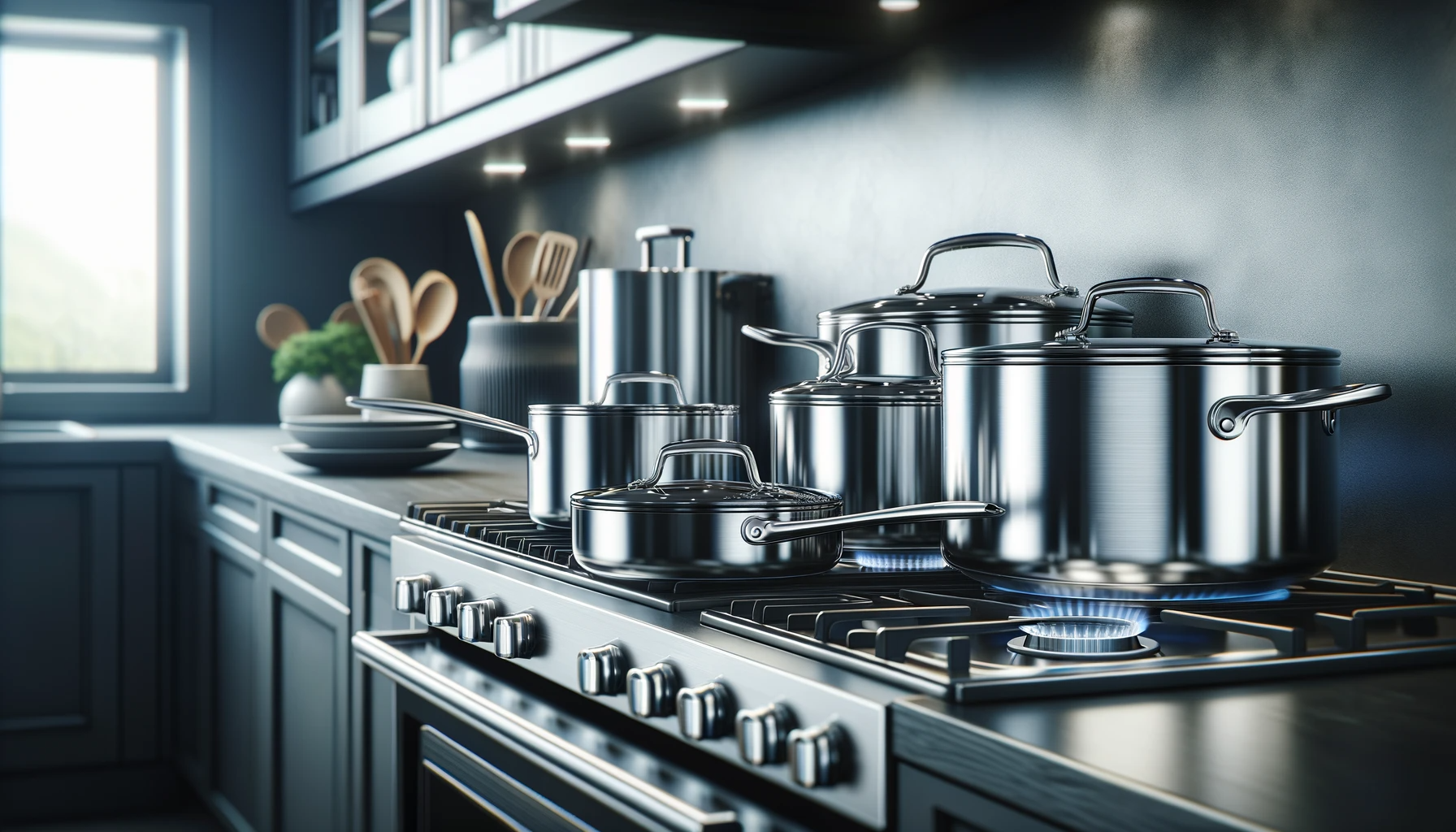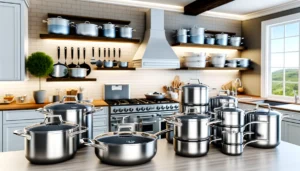Is using that quick squirt of cooking spray on your stainless steel pans totally safe after all?
With recent concerns over potential leaching of propellant chemicals into food over time with repeated use, manual oiling may be the wiser choice.
Let’s dive in and compare the options to make the healthiest choice for nonstick cooking.
Can You Use Cooking Spray on Stainless Steel Cookware?
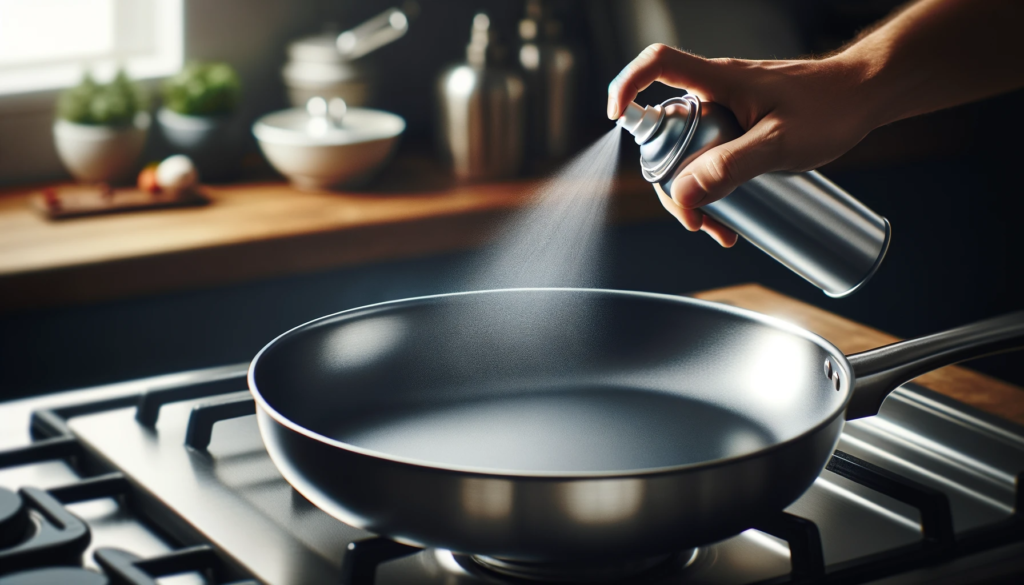
Yes, you can use standard cooking spray containing oils and propellants to coat stainless steel pots and pans to prevent sticking.
However, for optimal health and avoiding potential chemical leaching, taking the extra moment to manually apply pure plant-based cooking oils instead of spray is generally the wiser recommendation.
Now let’s explore the options in more detail.
What is Cooking Spray?

Cooking spray is a popular, convenient non-stick oil spray that is very commonly used to grease pans, baking sheets, and all manner of bakeware to prevent foods from sticking while cooking.
The main ingredients you will find in most standard cooking spray products are canola oil, soybean oil, vegetable oil, or a blend of these plant-based oils.
Cooking sprays also typically contain an emulsifier agent like lecithin or mono- and diglycerides, which helps distribute the oiled evenly when dispensed so that it spreads out and coats the entire interior surface of the pan.
The oils in cooking sprays are kept pressurized with propellants like propane, n-butane, or carbon dioxide gas.
These propellants allow the cooking oils to dispense from the can in an even, controlled spray when you press down on the nozzle.
Some benefits that explain the popularity of using cooking oil spray include convenience – since you can quickly spray pans instead of manually wiping oil around the interior surfaces.
The spray also coats the pan very lightly and evenly which reduces the amount of oil or butter you realistically need to use for most cooking tasks.
Using less added fats can lead to lower calorie meals.
And because less actual oil makes contact with the cookware, cooking sprays can also make clean up faster and easier after cooking is done.
Propellants – Are They Safe?
The propellants used in standard cooking oil sprays are generally considered safe and food-grade by regulatory authorities, meaning they are approved for indirect contact with edibles during cooking.
Propane and n-butane propellants must meet purity standards to ensure that potentially toxic additives are not present.
However, while the food industry claims these propellants don’t pose risks, propane and n-butane are still chemical compounds.
This means that even if the amount deposited on cookware via spray application is very minimal, there could still be some microscopic residue getting into food over time, especially with regular, long-term use of cooking sprays.
And even vanishingly small amounts of chemical residues getting into meals repeatedly could potentially lead to the propellants indirectly impacting health for some individuals.
So while not definitively shown to be dangerous, some health-cautious cooks may want to avoid exposure to propellants in cooking sprays whenever possible simply as a precaution.
Using pure cooking oils as an alternative greasing agent allows you to avoid this potential issue altogether by never letting spray propellants make contact with cookware surfaces.
Using Oil Instead of Spray
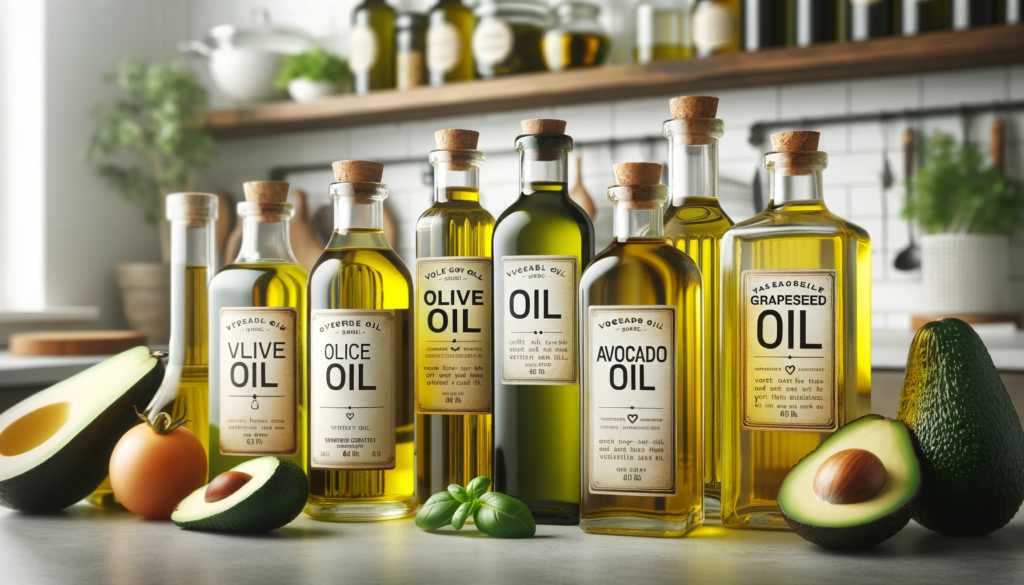
There are several plant-based cooking oils that work excellently for greasing pans, especially for prepping stainless steel cookware so foods won’t stick while cooking them.
Oils like vegetable oil, olive oil, avocado oil, grapeseed oil, peanut oil, sunflower oil, coconut oil, or liquid butter can help prevent sticking to metals like stainless steel very effectively.
To apply one of these traditional oils instead of cooking spray, simply pour a small amount onto a folded paper towel, soft kitchen cloth, or pastry brush and rub it evenly over the interior surface of the pan before heating.
It really only takes an incredibly thin film or layer to provide a non-stick effect.
Be sure to try to wipe off any visible excess oil, as leaving pooled oil in the cookware could lead to heavier smoking or burning as it heats up during cooking.
Also take care not to let oil overheat to the point of smoking, as this can negatively impact flavors in foods and potentially even release small amounts of carcinogenic compounds depending on the oil’s smoke point and how badly it overheats.
Cooking Oil vs Spray for Stainless Steel
Both cooking oil as well as commercially made non-stick spray work very effectively to prevent food from sticking to stainless steel cookware.
Stainless steel is one of the most popular cookware materials because it is durable, usually oven and dishwasher safe, resistant to rust, and does not leach chemicals like some non-stick coated pans potentially can.
But without proper pre-treatment, untreated stainless steel can allow quite stubborn sticking and residue build-up when cooking foods like eggs, pancakes, fish filets, and other more delicate ingredients prone to adhesion.
This is why it is so commonly advised to properly season stainless steel pans when new or to use some kind of fat or oil to prevent stickage before cooking certain recipes.
Both cooking spray and pure oil accomplish the non-stick effect by helping to coat and fill in the micro-pores and surface imperfections inherent in the stainless steel itself.
They provide a temporary slick buffer between food and the rougher metal pan surface.
When it comes to choosing a non-stick agent for prepping stainless steel cookware, pure cooking oils are typically the favored choice over commercial sprays since they allow you to avoid any potentially unwanted chemical propellants contacting foods.
However oils do require a tiny bit more effort and attention when wiping off any visible excess compared to quickly spraying and wiping a pan.
But the benefits of avoiding chemical residues likely outweigh this small added step.
Best Practices for Oiling Cookware
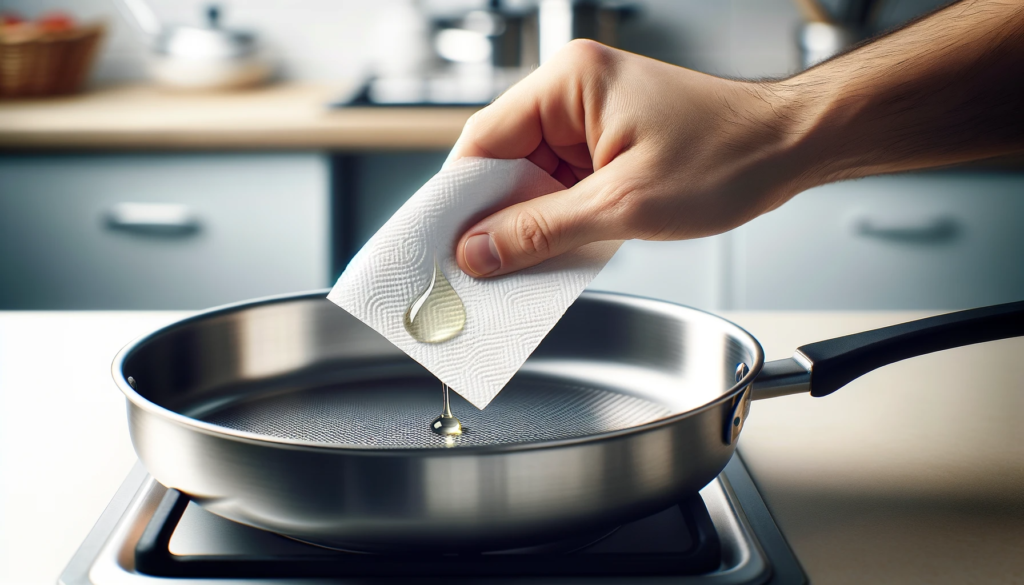
When applying cooking oil instead of non-stick spray to stainless steel pots and pans, keep these best practices in mind:
First, pour a very small amount of your chosen oil onto a folded paper towel, soft clean kitchen rag, or pastry brush.
Good oil options include vegetable, olive, avocado, grapeseed, sunflower, peanut, or liquid butter.
Unrefined coconut oil can also work well since its higher smoke point reduces burning risks.
Next, thoroughly rub the oiled paper towel, rag, or brush evenly over the entire interior surface of the pan – both bottom and sides.
Be sure to get full coverage so no spots are missed.
Doing this helps the oil get into the microscopic pores in the stainless steel to provide non-stick slickness.
Make sure to carefully wipe off any visible pools or excess oil, leaving just the thinnest faint layer behind.
Too much oil risky overheating, burning, smoking, and bitterness.
Try not to ever let the oiled pan heat to the point of smoking.
If it does start smoking, immediately remove the pan from heat to prevent potential formation of carcinogens.
Burnt oil tastes terrible anyway.
After cooking is done, allow the pan to cool slightly before washing to prevent warping stainless steel.
Then promptly wash the oiled pan with hot soapy water to prevent residue baking on.
Avoid leaving cooked-on residue.
If any bits of food are stuck on after cooking in the oiled pan, simply fill the pan with hot water and let soak for 20-30 minutes until food debris helps loosen.
The residue can then be removed easily without scrubbing.
Avoid using overly abrasive scouring pads or brushes when hand washing, as they can eventually damage and scratch stainless steel surfaces causing even worse stickage over time.
Conclusion
In summary, while most standard cooking sprays using common propellant chemicals are approved as generally safe for indirect food contact by regulators and scientists, some home cooks still personally choose to avoid them whenever possible.
Using pure, unprocessed plant-based cooking oils like vegetable, olive, or avocado oil allows health-cautious people to reap all the non-stick benefits of properly greasing stainless steel pans while avoiding any potential issues from chemical propellants leaching compounds into foods over time.
So while conventional cooking spray does function very effectively to prevent sticking to stainless steel cookware thanks to its emulsifiers spreading oils ultra-thinly and evenly, for optimal health precautions, taking a mere moment to manually oil pans with traditional cooking oils instead of spray is likely the wiser choice overall.
Manually oiling prevents sticking just as well, allows easy cleanup after cooking, and avoids any cumulative buildup of propellant chemical residues from sprays depositing inadvertently into meals over weeks, months and years of use.
The tiny bit of added effort pays off in peace of mind.
